Zinc deficiency is a widespread problem in soils worldwide. It is an essential mineral for plant growth and health. Unfortunately, it’s often found in soils in low concentrations, leading to plant zinc deficiency. When zinc levels are low, plants may exhibit symptoms such as stunted growth, chlorosis (a yellowing of leaves), and deformed fruits and vegetables.
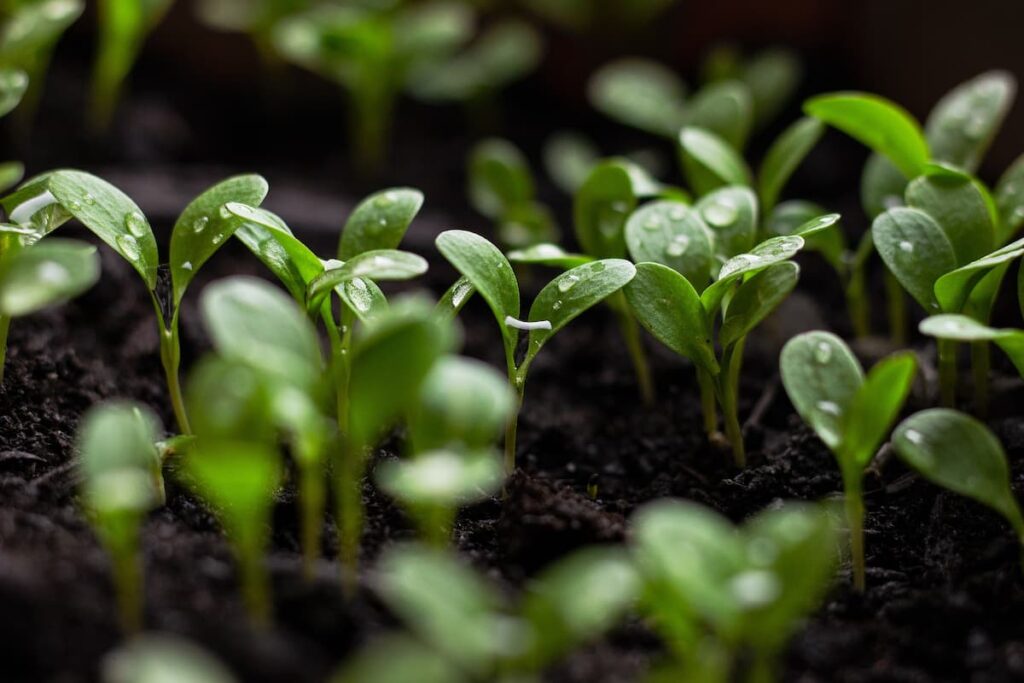
How to fix Zinc deficiency in soil and plants
Zinc importance and main role in plant growth
Zinc is an essential mineral for plants and soil, playing a role in plant growth, root development, chlorophyll production, and other processes. Zinc levels can be affected by many factors, including pH, moisture levels, fertility, and pesticide use. Too little Zinc in the soil can lead to poor growth and a deficiency in some plant nutrients. A balance between zinc availability and plant uptake is key to good plant health. Supplementing soils with Zinc can improve crop yields and reduce susceptibility to pests and diseases.
Zinc is an essential mineral for plants. It plays a role in the growth of roots, leaves, and flowers. Zinc also helps protect plants from pests and diseases. In crops, Zinc is involved in photosynthesis, root growth, seed germination, and fruit ripening. Zinc is found in most soils, but it’s not always plentiful. Soil that is rich in Zinc is typically brown or black. Zinc can be bought as a soil amendment, but it’s also found naturally in some plants, such as grasses and grains.
What is Zinc deficiency in soil and plants?
- It is one of the essential elements for plant growth. It is involved in photosynthesis, which helps plants convert energy from sunlight into usable food molecules. Zinc deficiency can cause several plant symptoms, including abnormal growth, yellow leaves, stunted growth, and reduced leaf production.
- To fix zinc deficiency in soil and plants, you first need to determine if it is present. To do this, you will need to take a soil sample and analyze it for levels of Zinc. Adding zinc sulfate or chloride will help correct the problem if a zinc deficiency is present. However, if the problem is caused by other factors, such as improper fertilization or drainage, then addressing those issues may be required first.
- Zinc deficiencies are most common in areas with high rainfall or clay soils. You can help prevent zinc deficiencies by planting legumes such as beans or peas in rotation with other crops that require higher levels of nutrients to grow well. Additionally, you can add composted manure to your soil to increase nutrient levels.
In case you missed it: How to Fix Nitrogen Deficiency in Soil and Plants: Symptoms, Causes, Adding Naturally, and Chemically
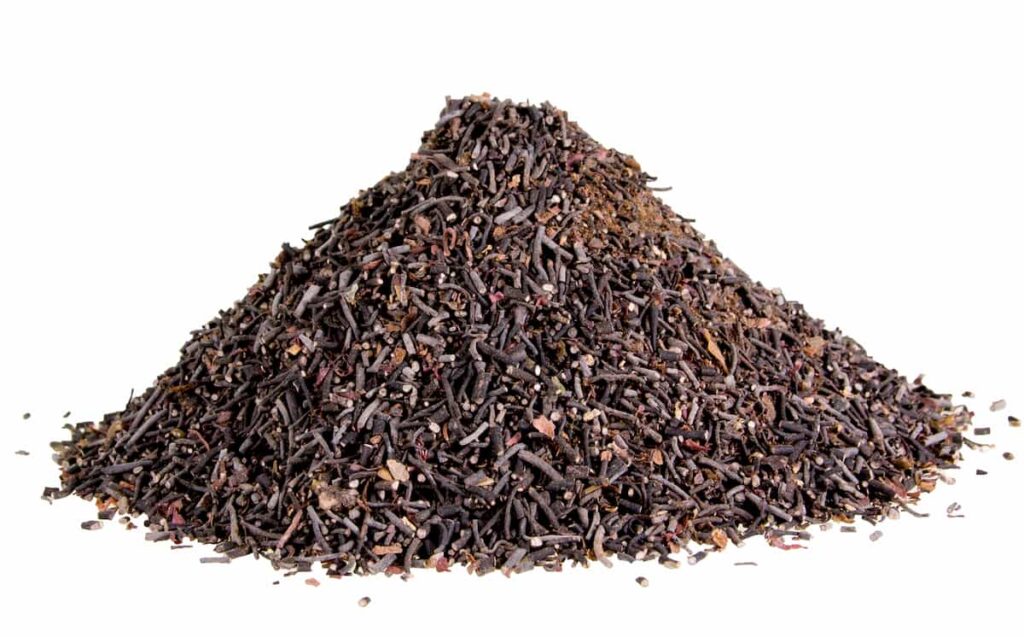
What are the deficiency symptoms of Zinc in soil?
Zinc deficiency symptoms in the soil can vary depending on the location, the type of soil, and the plant species. Deficiency can cause several symptoms in plants, such as stunted growth, abnormal leaf shape or size, yellowing of leaves and fruit, poor root growth, and chlorosis (a greenish-yellow discoloration of the leaves). However, zinc deficiency is most often caused by a lack of Zinc in the soil or plant’s food supply.
Use a soil test kit to check for plant zinc deficiency. If the results show that your plants are deficient in Zinc, you will need to add elemental Zinc to the soil. You can also add zinc sulfate or silicate to the soil to supplement the plant’s food supply. You can also apply an electronic top dressing that contains Zinc to help increase crop production.
Zinc toxicity is another common cause of plant deficiency. Symptoms of zinc toxicity include wilting and dieback of plants, reduced yield, and distorted flower structures. To prevent zinc toxicity in your plants, ensure they are getting enough fertilizer and water, and monitor the levels of Zn in your soil using a soil test kit.
The main symptoms of Zinc deficiency in plants;
- New leaves turn white, pale yellow, bronze, or yellow
- Leaf tissues die due to chlorosis
- Clustered leaves on the stems
- Stunted growth
- Narrow leaves
- Waxy margins
How do you solve Zinc deficiency in soil?
- Add a balanced fertilizer with Zinc to your soil
- Plant zinc-rich plants in your garden
- Apply compost or manure to the soil
- Use a zinc supplement made of chelated minerals
- Use a metal adhesive to bind topsoil together and add more organic matter
- Remove weed seeds and plant legumes that fix nitrogen
- Add elemental Zinc to the irrigation water
- Use an effective fungicide
- Dig up and replace depleted soils
In case you missed it: How to Fix Potassium Deficiency in Soil and Plants: Causes, Symptoms, Adding Naturally, and Chemically
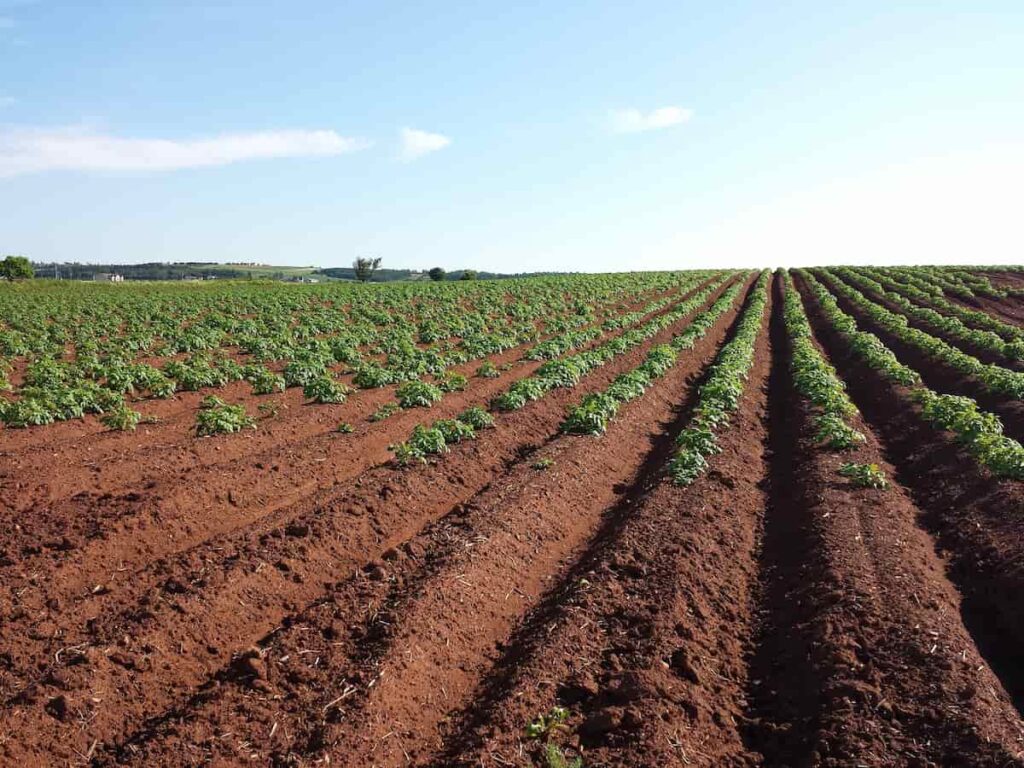
What are the effects of zinc deficiency in the soil on plants?
Soil zinc deficiency can lead to several plant problems, including decreased growth rate, chlorosis (yellowing of the leaves), and stunted growth. Root malformation and death may also occur in plants deficient in Zinc. Zinc is an essential nutrient for plants, and several factors can cause deficiencies. For example, zinc availability can be affected by soil pH levels, organic matter content, and other nutrients present in the soil. Deficiencies may also be brought on by excessive zinc use in agricultural practices, pollution, or water shortages.
Plant experts typically look for symptoms such as slow growth or poor root development to diagnose soil zinc deficiency. However, to treat zinc deficiencies in plants, it is often necessary to add elemental Zinc directly to the soil. This can be done through applications of chelates (solutions that combine elements with ligands), foliar sprays containing zinc salts, or ground granulated Zinc. In addition, some chemicals available to farmers to control pests and fungi may also contain elemental Zinc.
How to fix Zinc deficiency in plants
To prevent or fix a zinc deficiency in soil and plants, it is essential to identify and correct the problem. The most common remedies include:
- Using pH water to flush the growing medium should reverse the deficiency
- Water the plant with something other than tap water
- Use soil rich in Zinc
- Avoid overwatering
- Watch the plant for about seven days for any new signs of a deficiency
Ways to increase zinc availability to plants
Adding composted materials such as manure or leaves to the soil can help make it more acidic and higher in nutrients, promoting the uptake of Zinc. Plants can also be grown in raised beds that allow for better drainage and air circulation, which helps reduce the accumulation of moisture on the surface where metals are sequestered.
If your plant suffers from zinc deficiency, you can add zinc oxide (a form of elemental Zinc) directly to the soil or water solution. You can also add organic matter, such as compost, to help improve soil fertility and provide nutrients for the roots. Sometimes, you may need to apply a chemical fungicide or herbicide to address plant zinc deficiencies.
In case you missed it: How to Fix Phosphorus Deficiency in Soil and Plants: Symptoms, Causes, Adding Naturally, and Chemically
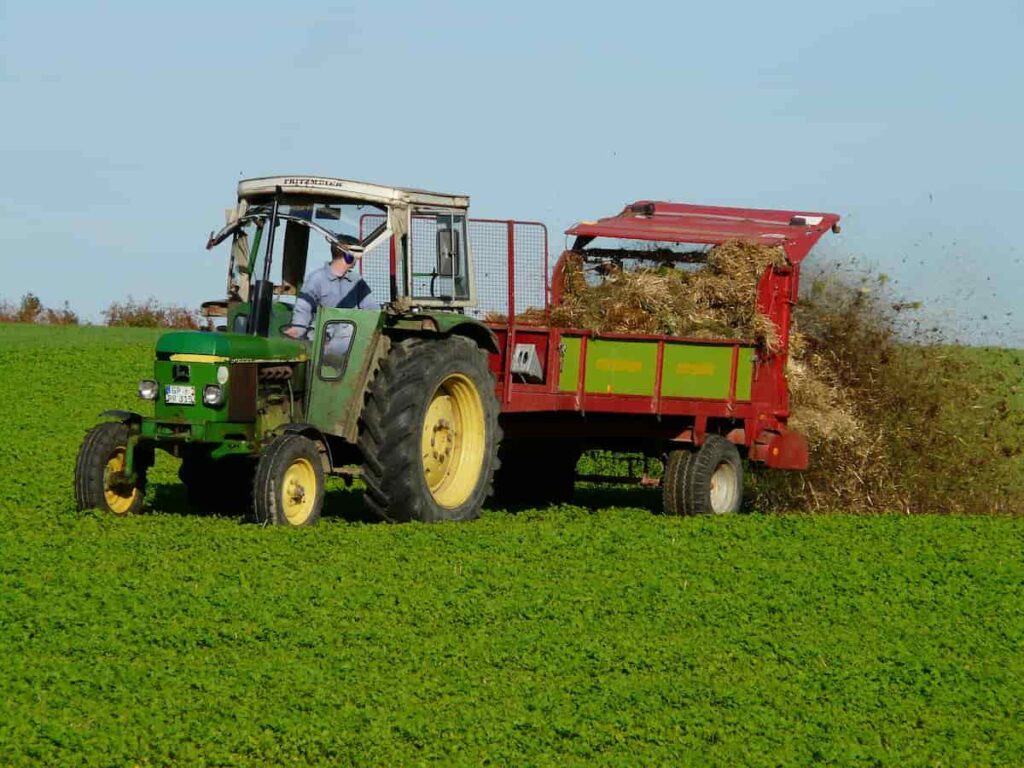
Prevention and cure of Zinc deficiency in plants
To prevent zinc deficiencies in plants, it’s important to ensure that the soil has a good balance of Zinc and magnesium. Add compost to the soil to increase nutrient levels. Try using mulch or green roofs to help retain moisture and improve soil aeration. Lastly, make sure you’re adding enough Zinc to your garden products. There are many ways to prevent zinc deficiency in plants. One way is to add zinc sulfate or other sources of Zinc to the soil before planting. Another way is to check the soil pH and adjust it if necessary.
If you suspect your plant has zinc deficiency, test the soil with a lab test kit. If the problem is severe, you may need to provide supplemental Zinc. To treat zinc deficiency in plants, you can add zinc sulfate or other elemental Zinc to the water or soil solution. You can also apply a fungicide that contains Zn-P-K to infected areas of the plant. Finally, you can feed your plants high-zinc vegetables such as kale and spinach.
How to add Zinc to soil organically?
- Zinc is essential to add Zinc to the soil organically to avoid disrupting the balance of the soil ecosystem. Zinc can be added through composting, topsoil applications, or a mixture.
- When adding Zinc to the soil, it is essential to consider the soil’s pH level and other elements. A pH level below 6.5 is ideal for zinc uptake by plants. When adding Zinc to the soil, it is also essential to avoid using chemicals that contain arsenic or lead because these chemicals will affect the uptake of Zinc by plants.
- There are a few ways to add Zinc to soil: composting, topsoil applications, or a mixture of both methods. The most effective way to add Zinc to soil depends on the location and condition of the soil.
- Adding composted material with high levels of organic matter helps increase trace minerals and improve soil fertility. Adding composted material with high levels of organic matter helps improve trace minerals and improves overall fertility levels in soils
- There are many different ways to add Zinc to the soil. Some of the most common methods are zinc sulfate, copper compounds, and zinc oxide. Adding Zinc can also be done chemically by using a chelating agent.
- Zinc deficiency in plants can be caused by many factors, including high amounts of aluminum in the soil, low soil pH levels, and excessive nitrogen fertilization. Therefore, it is essential to diagnose and correct the problem with appropriate amendments to fix zinc deficiencies in soils.
Causes of Zinc deficiency in plants
- Deficiency from decreased soil Zinc levels or loss of Zinc from the soil due to erosion or other causes
- Poor crop performance caused by insufficient Zinc availability to the plants
- Lack of uptake from the roots due to low soil pH or poor drainage
- Seedling stress
- The zinc level in the soil is too low
- Organic matter contains too little or too much Zinc
- The pH balance in the soil is low
- Soil temperature is low
- Limed or calcareous soil
- Soil becomes waterlogged
- The phosphorus level in the soil is too high
In case you missed it: How to Fix Boron Deficiency in Soil and Plants: Symptoms, Causes, Adding Naturally, and Chemically
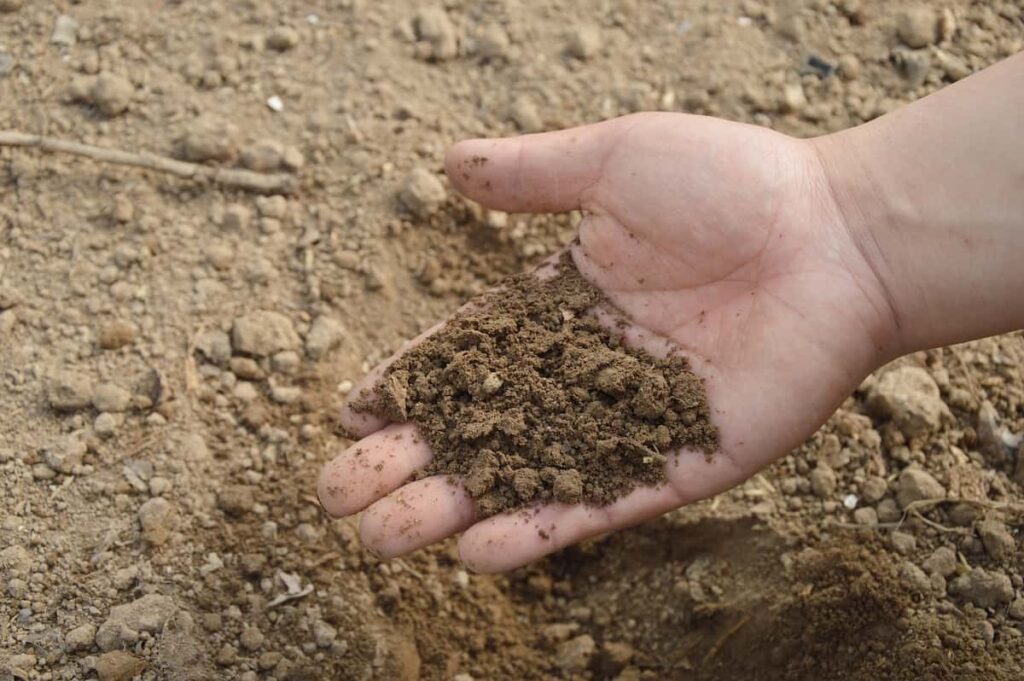
Ways to cause Zinc deficiency in plants
Some causes of zinc deficiency in plants include low levels of available soil zinc, high levels of aluminum toxicity (from pollution or waterlogging), or inadequate plant nutrition. You can add Zinc to the soil or water to increase its availability to plants or detoxify toxic metals from the environment. You can also chemically supplement your soil with Zinc if needed.
Deficiency from lack of rainfall
When there isn’t enough rain hitting the ground to dissolve minerals and bring them up to the surface, Zinc can be lost through leaching.
Deficiency from chemical use
Certain pesticides, fungicides, and other chemicals can eliminate Zinc from soils.
Deficiency from poor soil quality
Poor soil can have low levels of nutrients like Zinc which can lead to deficiency.
Over-fertilization
Too much fertilization can remove Zinc from soils, which becomes unavailable to plants. Zinc is typically used with other elements, such as nitrogen and potassium, which help with crop health and productivity. When these elements are in short supply agriculturally speaking, this will deplete the amounts of Zinc available to plants. When adding more Zinc back into the soil, it is important to consider the ratio of other nutrients and pH levels, as they all play a role in how much Zinc will be absorbed by the plant.
Fix Zinc deficiency in soil and plants chemically
Chemical applications such as chelated zinc products can also be used if other options are absent. Proper diagnosis is key to avoiding overdoing it with fertilization or supplements, as too much Zinc can harm plants.
Apply zinc sulfate
Zinc sulfate is a common mineral supplement used to improve soil fertility and plant growth. It can be applied directly to the soil or mixed with other fertilizers and injected into the ground using a drip system.
Use chelated Zinc
Chelated Zinc is bonded to proteins or other molecules. Chelated Zinc helps increase its availability to plants, and research suggests that it may be more effective than regular Zinc when it comes to fixing zinc deficiency in soil and plants.
Add bioavailable copper
Copper is essential for plant growth and function, but it’s often not available in sufficient amounts in soils and plants. Bioavailable copper is an important type of copper absorbed by plants more easily than other types of copper. Adding bioavailable copper can help improve plant health and fix zinc deficiency in soil and plants.
Grow crops that are high in zinc content
Some crops are high in zinc content, so growing these crops may help improve your situation if you have a deficiency. Zinc-rich crops include Beans, Peas, Nuts, Grains, Pistachios, Garlic Cloves, Onions, Apples, Pears, Cranberries, and Mushrooms.
In case you missed it: How to Fix Copper Deficiency in Plants and Soil: Causes, Symptoms, Adding Naturally, and Chemically
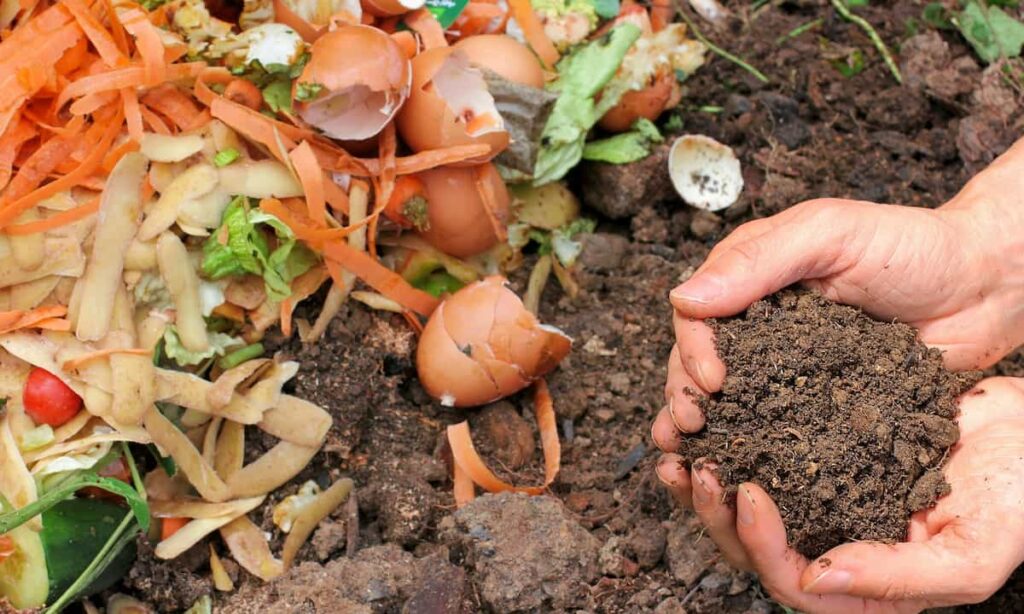
Fix Zinc deficiency in soil and plants naturally
- One way to fix zinc deficiency in soil is to add carbon dioxides sequestration minerals such as zincite or zeolite. These minerals bind with atmospheric CO2 and help decrease its levels in the atmosphere. When roots come into contact with these minerals, they absorb more Zinc than if no mineral was present.
- Another way is to add zinc sulfate or zinc chloride powder to your garden soil. This will help increase the amount of Zinc available to plants. You can also supplement your plants with a botanical source of Zinc, such as ground-up ginger roots or licorice root bark. Finally, you can use chemicals such as chelated iron or manganese sulfides to help improve the availability of these minerals in the soil.
- Another way to fix zinc deficiency in soil is to add organic matter like compost or manure. These substances help increase soil bacteria that can convert insoluble matter into soluble nutrients for plants. When these nutrients are available to plants, they can get better zinc uptake from the soil.
- If symptoms of a zinc deficiency are present in your garden, adding ground-up oyster shells (which contain high levels of this mineral) may help remediate the problem. Regarding causes of zinc deficiency, factors that can contribute include low fertility soils due to poor drainage or over-cultivation, incorrect plant spacing or fertilization techniques, low level of trace elements other than Zinc in the diet of plants grown on contaminated soils, or competition from weedy or aggressive plants.
- Adding Zinc to soil naturally can help restore balance and improve plant health. To add Zinc to your soil naturally, start by scouting your garden for deficient areas. Look for yellowing or wilting plants, stunted growth, or poor crop production. Once you have identified the areas that need supplementation, mix 1 part zinc sulfate with 9 parts water and apply it to the affected area using a hose or spray bottle. Repeat every three weeks until the problem has been corrected.
Conclusion
Zinc is an essential mineral for plants. It helps to form cell walls, enzymes, and other proteins. It also helps to make chlorophyll in plants’ leaves. Zinc is found in soils as well as plant tissues. Zinc also helps to promote the growth of new leaves and flowers. The amount of Zinc in a plant can vary depending on the soil type, location, and time of year. The main symptom of zinc deficiency in plants is stunted growth and a reduced yield. Other common deficiency symptoms include yellow flowers and distorted shapes or sizes of fruits or vegetables.
- Economical Aquaculture: A Guide to Low-Budget Fish Farming
- 15 Common Planting Errors That Can Doom Your Fruit Trees
- How to Make Houseplants Bushy: Effective Tips and Ideas
- Innovative Strategies for Boosting Coconut Pollination and Yield
- Pollination Strategies for Maximum Pumpkin Yield
- The Complete Guide to Chicken Fattening: Strategies for Maximum Growth
- Natural Solutions for Tulip Problems: 100% Effective Remedies for Leaf and Bulb-Related Issues
- Revolutionizing Citrus Preservation: Towards a Healthier, Greener Future
- Natural Solutions for Peony Leaf and Flower Problems: 100% Effective Remedies
- Maximizing Profits with Avocado Contract Farming in India: A Comprehensive Guide
- Natural Solutions for Hydrangea Problems: 100% Effective Remedies for Leaf and Flowers
- The Ultimate Guide to Choosing the Perfect Foliage Friend: Bringing Life Indoors
- From Sunlight to Sustainability: 15 Ways to Use Solar Technology in Agriculture
- The Ultimate Guide to Dong Tao Chicken: Exploring from History to Raising
- The Eco-Friendly Makeover: How to Convert Your Unused Swimming Pool into a Fish Pond
- Mastering the Art of Delaware Chicken Farming: Essentials for Healthy Backyard Flocks
- 20 Best Homemade Fertilizers for Money Plant: DIY Recipes and Application Methods
- How to Craft a Comprehensive Free-Range Chicken Farming Business Plan
- Brighten Your Flock: Raising Easter Egger Chickens for Beauty and Bounty
- How to Optimize Your Poultry Egg Farm Business Plan with These Strategies
- Subsidy for Spirulina Cultivation: How Indian Government Schemes Encouraging Spirulina Farmers
- Ultimate Guide to Raising Dominique Chickens: Breeding, Feeding, Egg-Production, and Care
- Mastering the Art of Raising Jersey Giant Chickens: Care, Feeding, and More
- Ultimate Guide to Raising Legbar Chickens: Breeding, Farming Practices, Diet, Egg-Production
- How to Raise Welsummer Chickens: A Comprehensive Guide for Beginners
- How to Protect Indoor Plants in Winter: A Comprehensive Guide
- Ultimate Guide to Grow Bag Gardening: Tips, Tricks, and Planting Ideas for Urban Gardeners
- Guide to Lotus Cultivation: How to Propagate, Plant, Grow, Care, Cost, and Profit
- Agriculture Drone Subsidy Scheme: Government Kisan Subsidy, License, and How to Apply Online
- Ultimate Guide to Raising Araucana Chickens: Breed Profile, Farming Economics, Diet, and Care
- Bringing Hydroponics to Classroom: Importance, Benefits of Learning for School Students
- Ultimate Guide to Raising Polish Chickens: Breed Profile, Farming Economics, Diet, and Care
- Ultimate Guide to Raising Australorp Chickens: Profile, Farming Economics, Egg Production, Diet, and Care
- Silkie Chicken Farming: Raising Practices, Varieties, Egg Production, Diet, and Care
- Sussex Chicken Farming: Raising Practices, Varieties, Egg Production, Diet and Care
- Homemade Feed Formulations for Livestock: Discover Cost-effective Starter to Finisher Feed Recipes